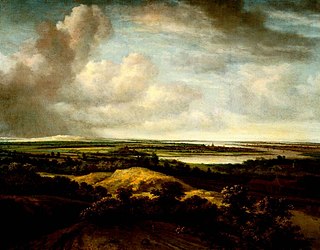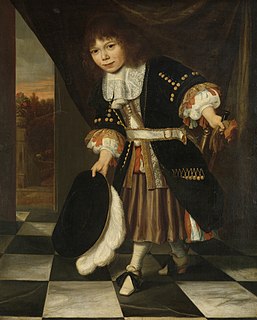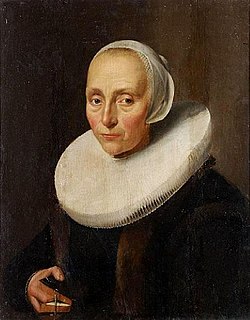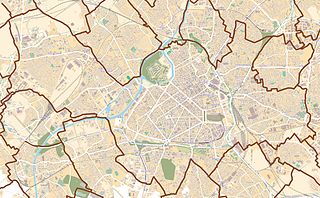
Philip de Koninck, or Philips Koninck (5 November 1619 – 4 October 1688 was a Dutch landscape painter and younger brother of Jacob Koninck.

Jan Hendrik Weissenbruch, also known as Hendrik Johannes Weissenbruch was a Dutch painter of the Hague School. He is noted especially for his watercolours.

Jacob Symonsz. Pynas, was a Dutch Golden Age painter.

Jan Griffier was a Dutch Golden Age painter who was active in England, where he was admitted to the London Company of Painter-Stainers in 1677.

Jan Symonsz. Pynas, was a Dutch Golden Age painter.

Francois (Frans) Verwilt was as a Dutch Golden Age landscape painter.

Egbert van der Poel was a Dutch Golden Age genre and landscape painter, son of a Delft goldsmith.

Hendrik Verschuring (1627–1690) was a Dutch Golden Age landscape painter from Gorinchem who often decorated his landscapes with soldiers on horseback.
Richard Brakenburgh or Brakenburg, was a Dutch Golden Age painter.

Jacob Bunel (1558–1614) was a French painter. The son and pupil of François Bunel, he was born at Blois. He studied at Rome under Federigo Zuccaro, and on returning to France was made painter to the king, and worked with Pourbus and Toussaint du Breuil in the small gallery of the Louvre, burnt in 1661. He was an artist of great merit, and held in much esteem by Henri IV, who employed him at Fontainebleau and other royal residences. He painted 'The Descent of the Holy Ghost' for the chapel of that order in the church of the Grands Augustins at Paris, and for the church of the Feuillants an 'Assumption of the Virgin,' now in the Museum at Bordeaux, both of which pictures have been highly praised. Philip II of Spain, by whom likewise he was esteemed, commissioned him to paint for the cloister of the Escorial forty pictures, all of which have now disappeared. He died in Paris in 1614.

Michiel Carree or Carré was a Dutch Golden Age painter.
Marmaduke Cradock was an English painter of birds and animals. Some older sources give his first name as Luke.
Pieter Coopse or Pieter Jansz. Coops, was a Dutch Golden Age seascape painter and draughtsman from Hoorn in the Northern Netherlands.

Louis de Moni was an 18th-century genre painter from the Northern Netherlands.

Willem Eversdijck (c.1620-1671) was a Dutch Golden Age painter.

Adam de Colone, or Adam Louisz. de Colonia, was a Dutch Golden Age painter active in Scotland during the reigns of James VI and I and Charles I of England.

Adriaen Hendriksz Verboom, was a Dutch Golden Age landscape painter.

Jan Snellinck (III) was a Dutch landscape painter. He worked his entire career in Rotterdam and is known for his landscapes, moonlight scenes and peasant scenes.
The public domain consists of all the creative works to which no exclusive intellectual property rights apply. Those rights may have expired, been forfeited, expressly waived, or may be inapplicable.

Michael Bryan was an English art historian, art dealer and connoisseur. He was involved in the purchase and resale of the great French Orleans Collection of art, selling it on to a British syndicate, and owned a fashionable art gallery in Savile Row, London. His book, Biographical and Critical Dictionary of Painters and Engravers, first published in 1813-16, was a standard reference work throughout the 19th century, and was last republished in 1920; however it is now badly outdated.




















